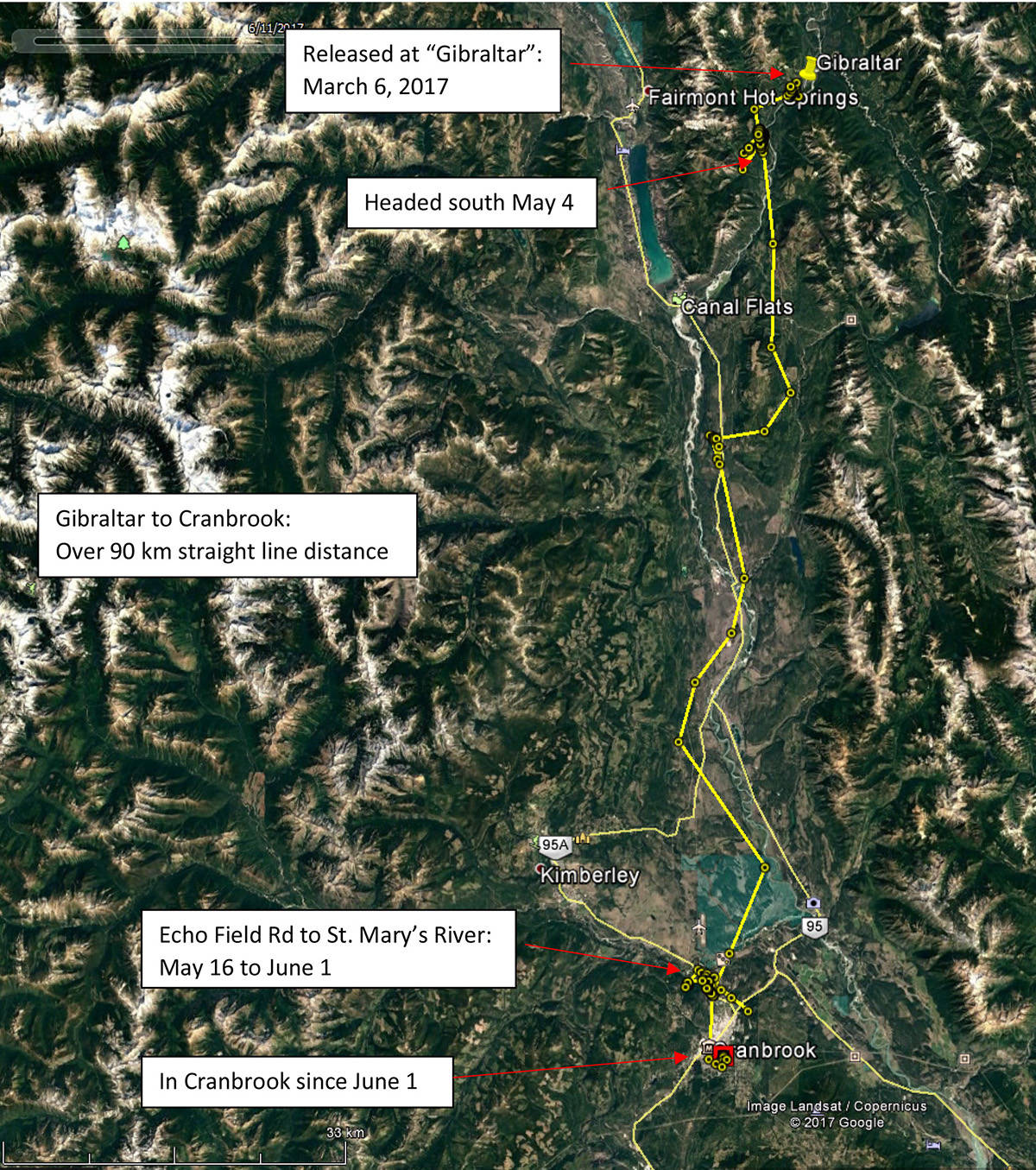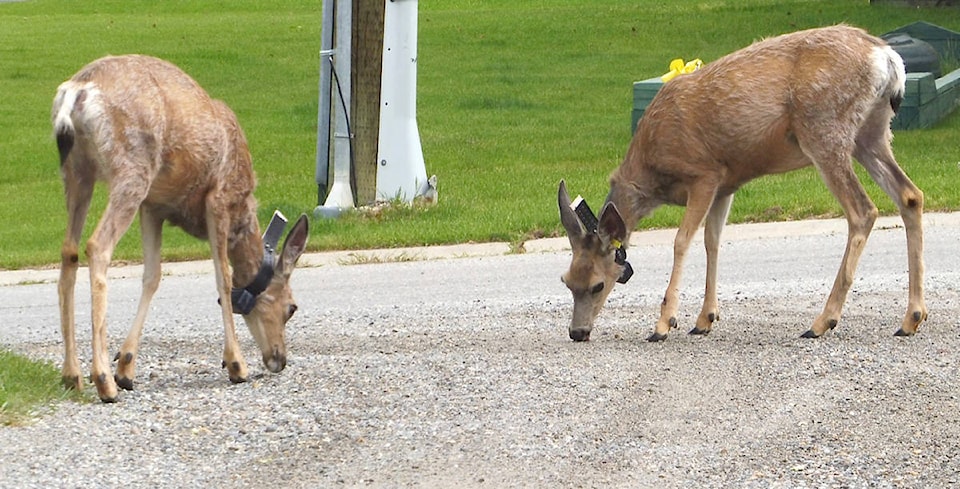Three deer have arrived in Cranbrook wearing radio collars and sporting yellow ear tags.
Ian Adams, a wildlife biologist involved with the urban deer translocation trials said the deer in question were captured in Kimberley in March, 2017, close to the Civic Centre arena, translocated and released in the Gilbraltor area on the Kootenay River Forest Road northeast of Canal Flats.
The radio collars fitted on the deer during their capture has provided detailed information of their subsequent movements.
“These three deer in particular all came from the same spot. They stayed in that general area until May 4, then they started heading south.
Adams said that the deer spent a few days on the ridge between Skookumchuk and Canal Flats — known to some as Dragon’s Back, then they just kept coming until they arrived in town. They came down the trench and showed up a week or 10 days later in North Cranbrook — the Echo Fields area along the Kimberley highway up to Shadow Mountain.
The deer were on Shadow Mountain a couple of times, and one of them was on Six-Mile Lane for a bit, Adams said.
“They showed up in Cranbrook proper on June 1.”
It took the deer not quite two weeks to get from the Upper Kootenay River to downtown Cranbrook.
Adams said that the first spot where the deer were spotted was, ironically, the parking lot of VAST, the biological company that ran the translocation.
“They showed up in the yard of the fellow who helped us with the translocation,” Adams said with a laugh. “It’s like they’re stalking us.”
Twenty-five deer in total were moved this year — 13 from Kimberley and 12 from Cranbrook. Of those, 18 were fitted with radio collars.
Adams added that there was a fourth deer making the trek, which stayed on the Bootleg Gap golf course at Marysville. “She was part of the same group, but spent much time on her own. She spent almost a month on the west side of the Kootenay River, between Skookumchuk and Canal Flats, on her own, not going into any community. But she started moving south, and we think she’s given birth to a fawn on the 14th or 15th hole of Bootleg Gap.”
Folks at Bootleg Gap have been notified that there could be a deer with a fawn at that spot — and to tell golfers to exercise all due caution.
Adams said it’s a pattern seen before, where deer stay out of the towns, but just before giving birth, they move into an urban developed area — “it’s their safe zone, where they want to give birth.”
The data provided by the translocation exercise has been informative and comprehensive. Adams said he is checking with places like Utah and New Mexico to find out how unprecedented is this level of travel is.
“Certainly the distance these deer have gone is impressive.”
Adams wanted to remind the public that it is fawning season.
“There’s no reason to suspect that these [radio-collared] deer are any more aggressive than other deer in the area. But the public should know that we are at the height of fawning season, when deer are most aggressive, defending their newborn young. Dogs and people walking dogs in particular seem to trigger aggressive behaviour in deer. If you are walking a dog, and you see a deer, beware of that deer if it’s showing signs of aggression — making eye contact, following you, having ears down and forward. That’s a sign that the deer is not comfortable, and you should back off and get out of the area.”

